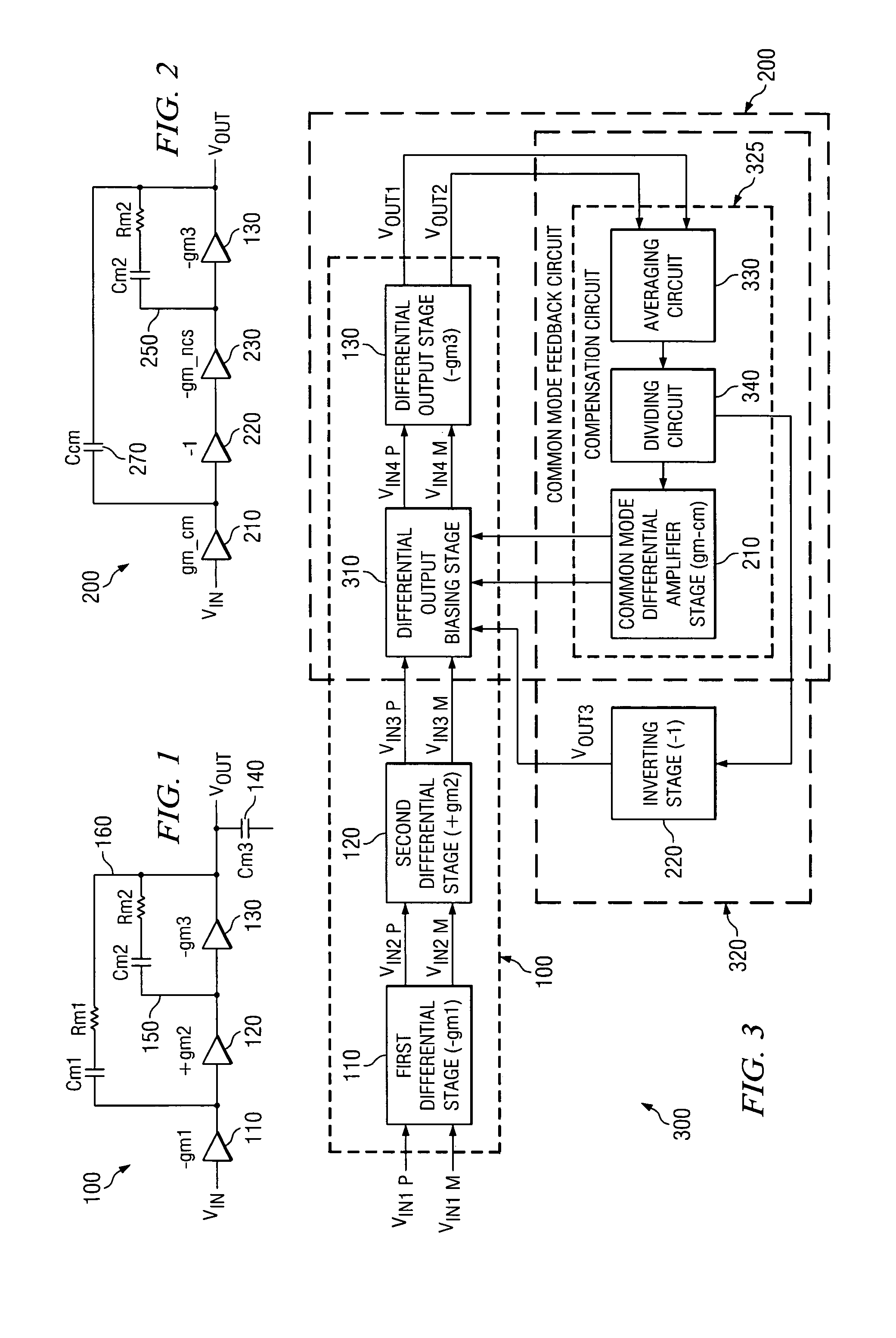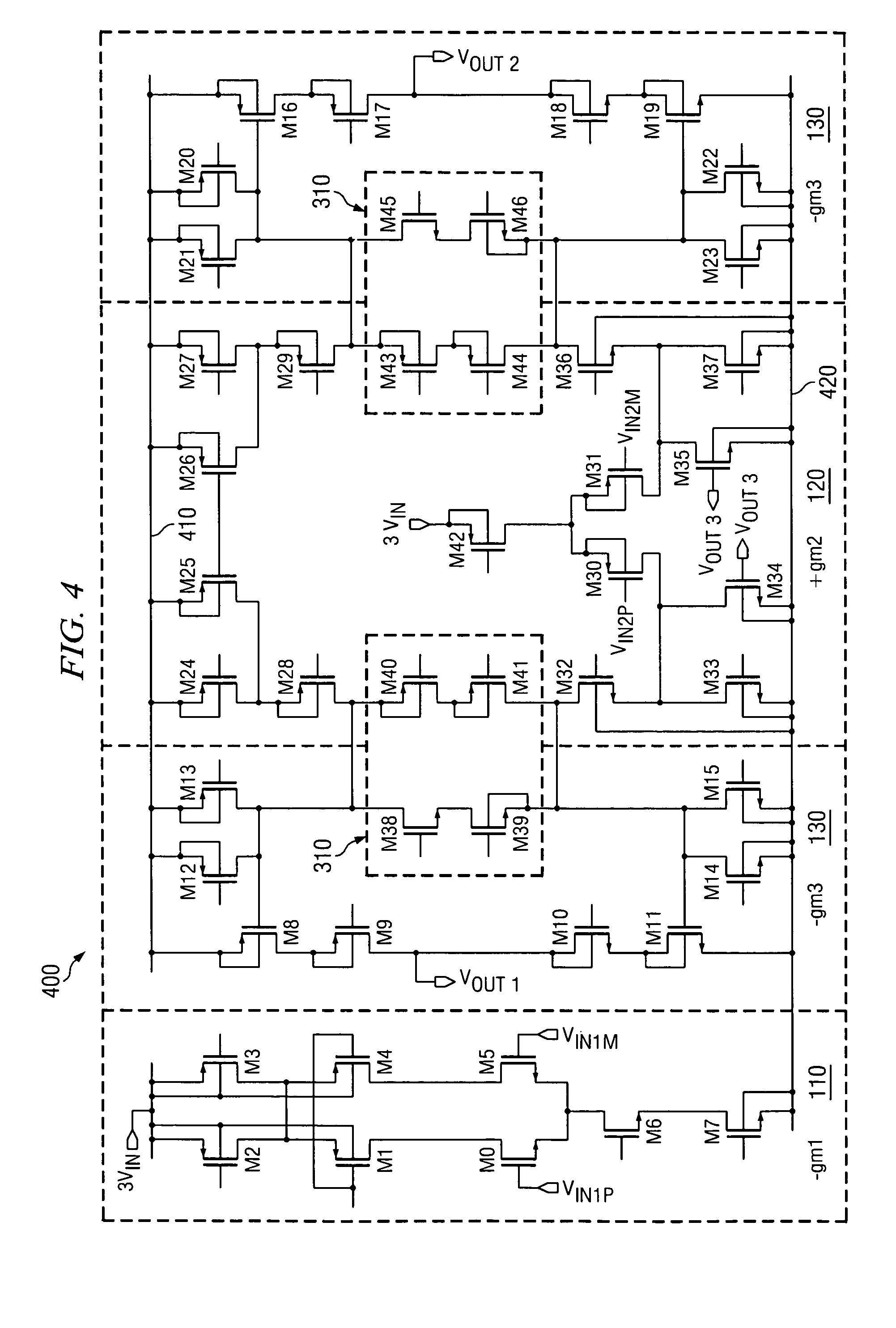Multistage common mode feedback for improved linearity line drivers
a linearity line driver and common mode feedback technology, applied in differential amplifiers, amplifiers with semiconductor devices/discharge tubes, amplifier details, etc., can solve the problems of reducing the performance of line drivers in three-stage differential amplifiers, limiting the performance of line drivers by second harmonics, and reducing the power and silicon area.
- Summary
- Abstract
- Description
- Claims
- Application Information
AI Technical Summary
Benefits of technology
Problems solved by technology
Method used
Image
Examples
Embodiment Construction
[0013]The present subject matter provides a technique to attenuate even-order harmonics of the third stage of a multistage nested Miller compensation circuit. In one example embodiment, this is accomplished by using a separate multistage loop for the common mode feedback loop. The common mode feedback loop is the fourth stage which uses the third stage of the nested Miller compensation circuit to give an effect similar to a third order loop for the attenuation of the even-order harmonics of the third stage.
[0014]In the following detailed description of the embodiments of the invention, reference is made to the accompanying drawings that form a part hereof, and in which are shown by way of illustration specific embodiments in which the invention may be practiced. These embodiments are described in sufficient detail to enable those skilled in the art to practice the invention, and it is to be understood that other embodiments may be utilized and that changes may be made without depart...
PUM
 Login to View More
Login to View More Abstract
Description
Claims
Application Information
 Login to View More
Login to View More - R&D
- Intellectual Property
- Life Sciences
- Materials
- Tech Scout
- Unparalleled Data Quality
- Higher Quality Content
- 60% Fewer Hallucinations
Browse by: Latest US Patents, China's latest patents, Technical Efficacy Thesaurus, Application Domain, Technology Topic, Popular Technical Reports.
© 2025 PatSnap. All rights reserved.Legal|Privacy policy|Modern Slavery Act Transparency Statement|Sitemap|About US| Contact US: help@patsnap.com



